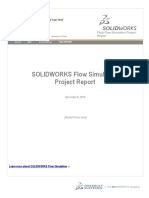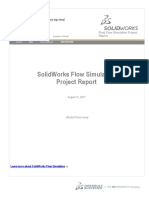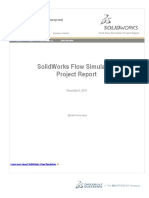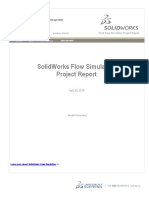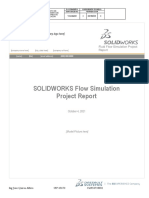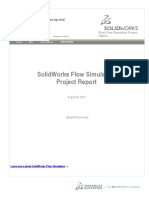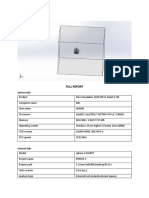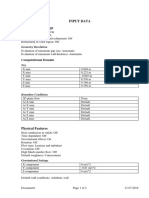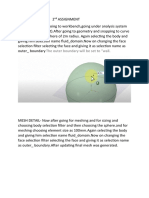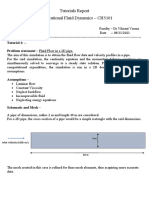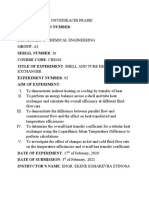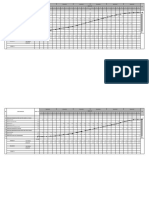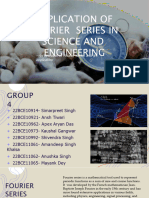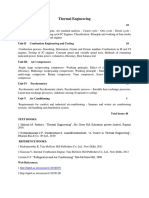0% found this document useful (0 votes)
13 views12 pagesFlow Simulation Report
The Fluid Flow Simulation Project Report details the objectives, analysis environment, and simulation parameters for a project using SolidWorks Flow Simulation. It includes information on the computational domain, mesh settings, material properties, boundary conditions, and results of the simulation. The report concludes with a summary of findings and an appendix with material data.
Uploaded by
SAMEER SARWARCopyright
© © All Rights Reserved
We take content rights seriously. If you suspect this is your content, claim it here.
Available Formats
Download as DOCX, PDF, TXT or read online on Scribd
0% found this document useful (0 votes)
13 views12 pagesFlow Simulation Report
The Fluid Flow Simulation Project Report details the objectives, analysis environment, and simulation parameters for a project using SolidWorks Flow Simulation. It includes information on the computational domain, mesh settings, material properties, boundary conditions, and results of the simulation. The report concludes with a summary of findings and an appendix with material data.
Uploaded by
SAMEER SARWARCopyright
© © All Rights Reserved
We take content rights seriously. If you suspect this is your content, claim it here.
Available Formats
Download as DOCX, PDF, TXT or read online on Scribd
/ 12






